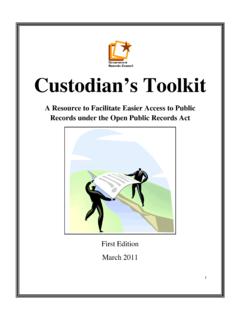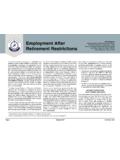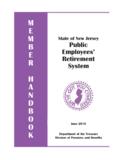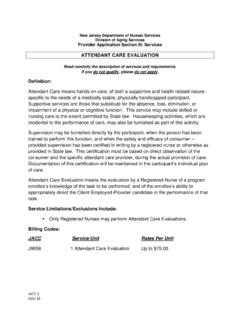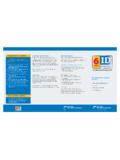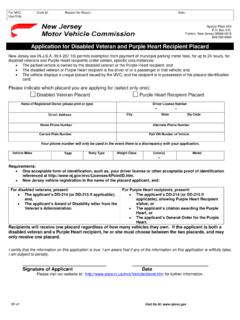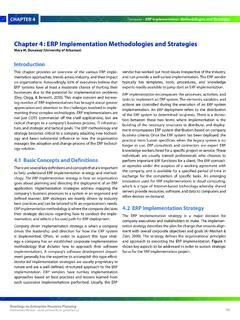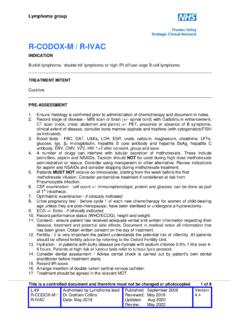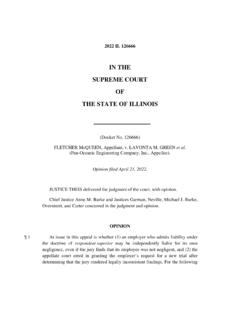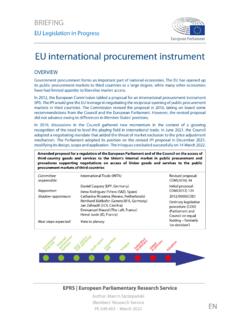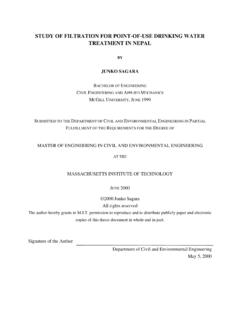Transcription of Interim Guidance for Implementing Test to Stay in K-12 Schools
1 Interim Guidance for Implementing Test to Stay in K-12 Schools April 12, 2022. Test to Stay (TTS) combines contact tracing and serial testing to allow asymptomatic close contacts who meet the criteria for quarantine to continue in-person learning. Schools that are considering Implementing TTS, should also have contact tracing in place and access to testing resources, for example, testing supplies (including self-tests, or access to an existing community testing site), personnel to conduct testing (if testing on-site), among other layered prevention strategies. This document outlines Guidance from New Jersey Department of Health (NJDOH) on how Schools can implement a TTS modified quarantine based on data released by CDC. Schools may use a TTS modified quarantine protocol that allows asymptomatic students who meet the criteria for quarantine and who are exposed to a person with COVID-19 to continue in-person academic activities that are part of the regular school curriculum and provided during school hours.
2 Schools should work with their local health department (LHD) when responding to cases of COVID-19 in school settings and assess risk to students and staff based on COVID-19 spread in their geographic area, and capacity of nursing and other staff to implement such protocols, in order to inform any decisions made on whether and how to implement a TTS program. Schools that choose to implement TTS should do so alongside other COVID-19 preventive strategies. School districts that choose not to adopt a TTS program or individuals who elect not to participate should continue to follow the existing Guidance for exclusion of close contacts in K-12. Schools . Please note that these guidelines are subject to change as additional data become available. Eligibility Participation in TTS should be limited to K-12 students who meet the criteria for quarantine and: Do not have any signs or symptoms of COVID-19.
3 Are not a household contact of a COVID-19 case. Are able and willing to follow the below modified quarantine and testing protocols with parental consent (if applicable). Are able and willing to mask. Test to Stay Protocol Eligible students participating in TTS program should adhere to the following protocols: Wear a mask when around others, indoors and outdoors at all times when at school (except for eating/drinking) for the entirety of TTS program and through 10 full days after their last exposure to someone with COVID-19 even if all test results are negative. o The mask should fit securely over the nose and mouth. o When masks are removed for eating/drinking, students should maintain 6 feet from others to the greatest extent practicable. Quarantine when not at school and refrain from extracurricular activities where consistent masking is not possible.
4 Monitor for symptoms daily until 10 days after their last exposure to someone with COVID-19. Comply with the TTS testing protocol. 1. Test to Stay Testing Protocol Testing may be performed using home based tests including self-tests OR at a testing location (either on-site or off-site) using a rapid test. Testing frequency: o Students should be tested immediately following the notification of being a close contact. For Schools conducting in-school testing, if notification occurs after school hours, the student should be tested the first school-day morning prior to attending in- person instruction. o After the first negative test result, the student may continue to attend in-person instruction and then submit to testing on day 5 after exposure. If in-school testing would fall on the weekend or a school holiday based on this schedule, testing should occur in school on Monday or the school day following the holiday.
5 O If the final test result is negative, no further TTS testing is required; students would continue to follow additional precautions through Day 10. If any student tests positive for COVID-19, the student should be immediately excluded from school for the recommended isolation period from the date of the positive test. The school should identify the student's in-school close contacts and if they meet the criteria for quarantine either immediately test those students for COVID-19 or exclude them from school until they are tested. If negative, those contacts can follow TTS protocols or traditional quarantine/exclusion Guidance . If a student develops COVID-19 symptoms, they should be excluded from school and referred for diagnostic testing, following NJDOH guidelines for school exclusion. TTS may be suspended in certain outbreak settings ( , where close contacts cannot be readily identified) in consultation with local health departments.
6 Reporting of positive tests (for Schools using self-tests). If self-tests are used for TTS, Schools should report positive test results either through CDRSS (select COVID-19 Home-Based Test as the test name) or to their LHD. Additional reporting requirements and considerations for Schools conducting testing on-site: Ensure that individuals conducting on-site school-based testing complete training on specimen collection and interpretation of results per manufacturer's instructions. Obtain a CLIA waiver if the school is performing on-site testing. o A CLIA (Clinical Laboratory Improvement Amendments) certificate of waiver is necessary to administer, process, and read COVID-19 tests on school grounds. o The entity administering tests (whether school or vendor) must have a CLIA certification of waiver.
7 O For example, if the testing is administered by the vendor, the vendor must obtain a CLIA. certification of waiver. If the testing is administered by the school, the school or school district must obtain a CLIA certification of waiver. o If a LEA or non-public school contracts with a CLIA certified vendor, the school does not need its own, separate CLIA certification of waiver. 2. Obtain advanced consent for testing of students. Report individual test results to the individual who provided consent and ensure that test results are reported to public health authorities. All healthcare providers and laboratories performing COVID-19 testing, including K-12 Schools , are required to report all COVID-19 laboratory test results, both positive and negative, electronically to public health authorities.
8 O While tests that are performed in a laboratory must be reported into the Communicable Disease Reporting and Surveillance System (CDRSS), Point of Care (POC) tests, which includes those that would be administered by the school as part of the TTS program, may either be reported through SimpleReport or CDRSS. o SimpleReport: To get started, Schools providing testing should go to , click on Getting Started, and Onboard your Organization. Online user support and training resources are available, including a user guide and videos. SimpleReport is managed and coordinated by CDC who provides support for users having problems logging in or who have other questions about using SimpleReport. o CDRSS: New users should go to and select the Quick Start Option for COVID-19 Training. Questions about reporting into CDRSS should be sent to Reporting Suspected Outbreaks Schools should report a cluster or suspected outbreak of COVID-19 by telephone, immediately to their local health department.
9 CDC Resources Test to Stay Options Can Help Keep Students in School During Covid-19. Science Brief: Transmission of SARS-CoV-2 in K-12 Schools and Early Care and Education Programs Updated What You Should Know About COVID-19 Testing in Schools MMWR - Evaluation of Test to Stay Strategy on Secondary and Tertiary Transmission of SARS- CoV-2 in K 12 Schools Lake County, Illinois, August 9 October 29, 2021 - Weekly / December 31, 2021 / 70(5152);1778 1781. MMWR - Evaluation of a Test to Stay Strategy in Transitional Kindergarten Through Grade 12. Schools Los Angeles County, California, August 16 October 31, 2021 - Weekly / December 31, 2021 / 70(5152);1773 1777. 3. Test to Stay Keeps Kids in School Information for Schools Why Participate in Test to Stay (TTS)? TTS allows asymptomatic students who meet the criteria for quarantine to continue in-person learning as long as they test negative for COVID-19.
10 *. On-site school testing is not required. Simple Steps to TTS! Identify students who meet criteria for quarantine. Notify parent or guardian of the option to participate in TTS to continue in-person learning. Ensure student can access 2 tests, one to use upon notification and one to use at the end of day 5. Provide parent or guardian with Parent TTS Flyer. Review NJDOH TTS Guidance for more information. How to Get Tests for TTS? Contact your school administration about getting free tests for students. Email if your school participates in the NJDOH Screening Testing Program. Advise parents they may order free at home tests to have on hand at or get tests at many local pharmacies that may be covered by health insurance plans.**. * Schools Implementing TTS should have contact tracing in place and access to testing resources such as testing supplies (including self-tests, or access to an existing community testing site), personnel to conduct testing (if testing on-site), among other layered prevention strategies.
